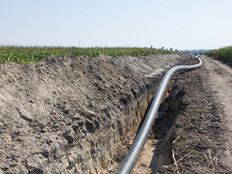The Internet: A Brief and Impressive History [#Infographic]
Change is inevitable when it comes to technology. It seems to only take a few short years to make the technology we know and love faster, sleeker and more accepted worldwide.
The Internet is a prime example: It has grown and developed drastically since its launch in 1969. From initially only linking together four computers in a research lab to now connecting phones, tablets, computers and other devices from all corners of the world, there seems to be no end to the progression of the World Wide Web.
But why should state governments pay attention to the expansion of the Internet? What does its improvement have to do with the way we live?
Social Media Usage
It seems like everyone is on social media these days — billions of pieces of content are shared on Facebook weekly and at least 65 million tweets are sent daily. Therefore, governments should have a presence on the platforms their constituents are on. While the general public may not check a state or town’s website daily, an efficient Facebook page or Twitter profile can provide updates on new laws, alerts during emergencies and improved discussion and engagement.
Mobile Device Management
With the average smartphone consuming 500 megabytes of data per month, governments should think of new ways to blend everyday behaviors, like going to the doctor, with technology. After years of discussion, electronic health records are now being used in departments like Veterans Affairs and Health and Human Services. Thanks to mobile devices, doctors can conveniently share records and other information with providers and patients faster.
Check out even more fun statistics about the growth of the Internet below:

This infographic originally appeared on the Who Is Hosting This? blog.








